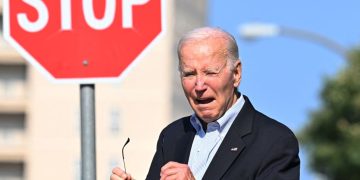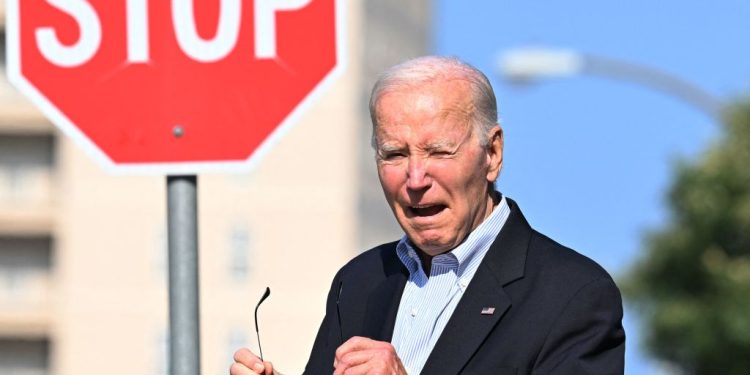President Joe Biden routinely touts the jobs “boom” that he thinks the bipartisan infrastructure law will drive, but the industries set to build the projects the bill will fund are currently having difficulty finding enough workers to actually do so, according to NBC News.
The administration is beginning to shell out nearly $550 billion unlocked by the infrastructure package to subsidize upgrades to America’s ports, roadways, bridges, internet access and more, in many cases with a focus on climate change, according to the White House. While the administration expects the bill to drive the creation of millions of jobs in the coming decade, an apparent lack of blue-collar workers and rising supply costs could hamper projects that the administration has touted as signature achievements of its tenure, NBC News reported.
“I also want to be clear: We are in this to win,” Biden said during a January 2022 speech about the bill in South Carolina. “And, you know, there is — there is a lot of work underway. And it’s going to create a whole lot of jobs.”
“Combined with the President’s Build Back Framework, it will add on average 1.5 million jobs per year for the next 10 years,” the White House said of the bipartisan infrastructure law in November 2021.
The deluge of federal funds are beginning to enter the market as many firms have difficulty finding laborers, especially in some fields that will be crucial for completing subsidized infrastructure projects, such as electricians, welders and broadband internet specialists. There could be a construction worker shortage for 500,000 jobs this year, according to projections by the Association of Builders and Contractors (ABC), a trade association representing the construction industry.
The unemployment rate remains relatively low, hovering around 3.5%, but that figure only takes into account Americans who are looking for work, and leaves out the nearly 2 million American who have dropped out of the workforce since February 2020, according to the U.S. Chamber of Commerce.
The construction labor shortfall, a years-long trend, is largely attributable to older workers retiring without new workers coming into the trades as replacements, suggested Ben Brubeck, ABC’s vice president of regulatory, labor and state affairs, according to NBC News.
Competition in the labor market between private and public projects may end up delaying projects, as there are only so many workers available to reap higher wages, and supply costs are up by about 40% relative to pre-pandemic times, Brubeck said, according to NBC News.
“There’s a lot of concern that taxpayers aren’t really getting the best bargain for their investments,” Brubeck added, according to NBC News. “There are going to be some serious delays, I think, because there won’t be enough labor in certain markets.”
Some states, such as Ohio, are rolling out job training programs for soon-to-be-released convicts so that they can fill some of the positions once released, NBC News reported.
“There’s a real math problem of where do these workers come from,” Mike Bartlett, program manager for postsecondary and workforce success at the National League of Cities, said, according to NBC News.
The White House did not respond immediately to a request for comment.
All content created by the Daily Caller News Foundation, an independent and nonpartisan newswire service, is available without charge to any legitimate news publisher that can provide a large audience. All republished articles must include our logo, our reporter’s byline and their DCNF affiliation. For any questions about our guidelines or partnering with us, please contact [email protected].
All content created by the Daily Caller News Foundation, an independent and nonpartisan newswire service, is available without charge to any legitimate news publisher that can provide a large audience. All republished articles must include our logo, our reporter’s byline and their DCNF affiliation. For any questions about our guidelines or partnering with us, please contact [email protected].



























 Continue with Google
Continue with Google